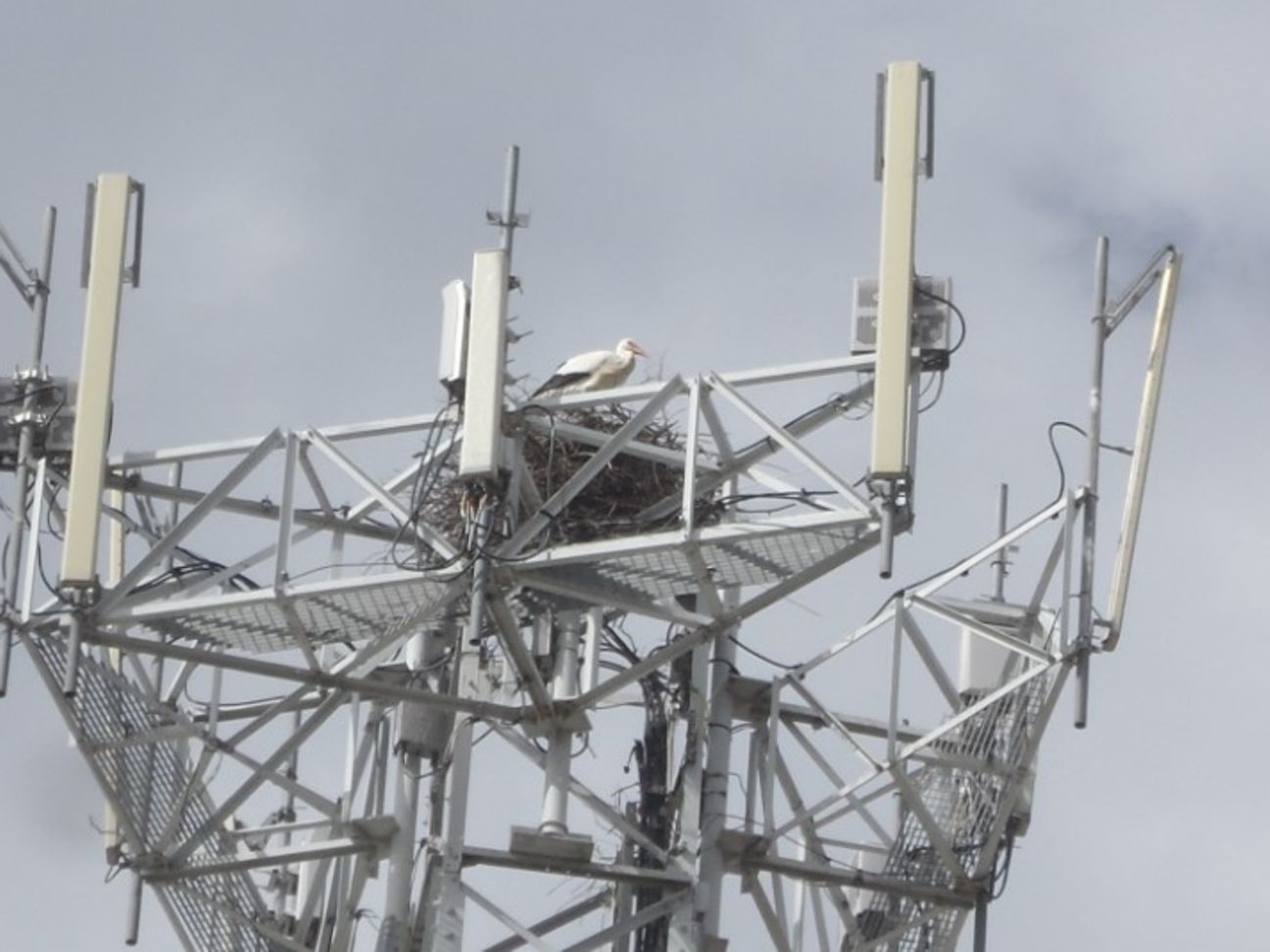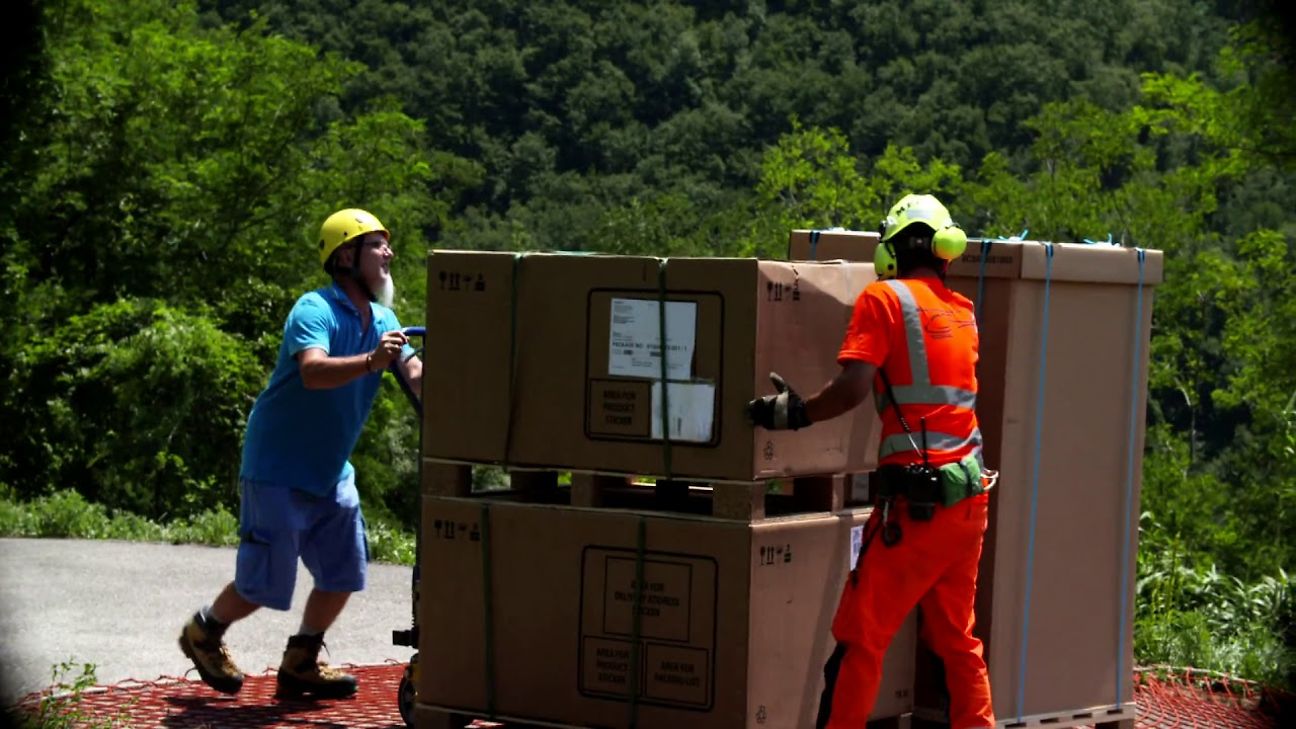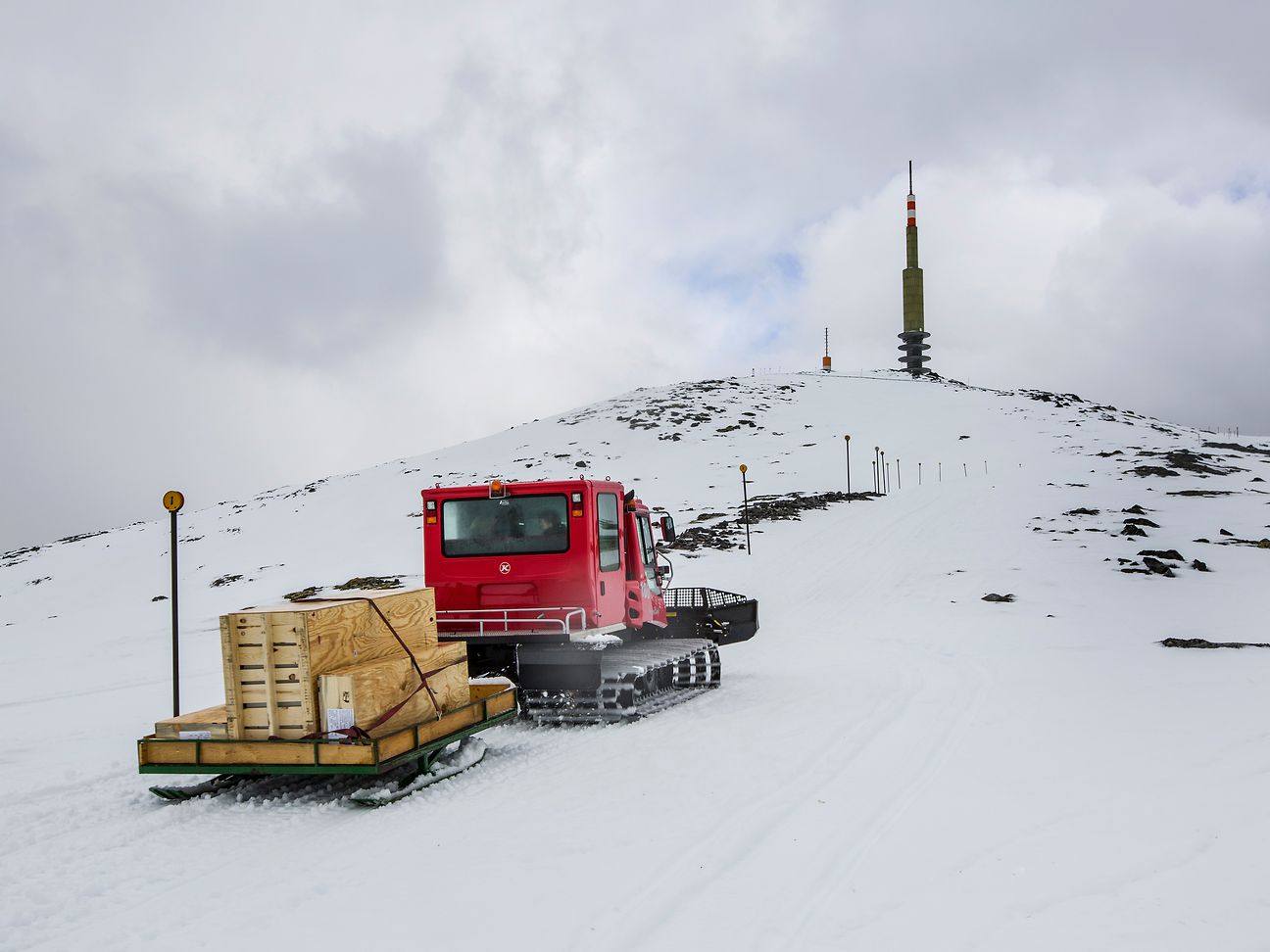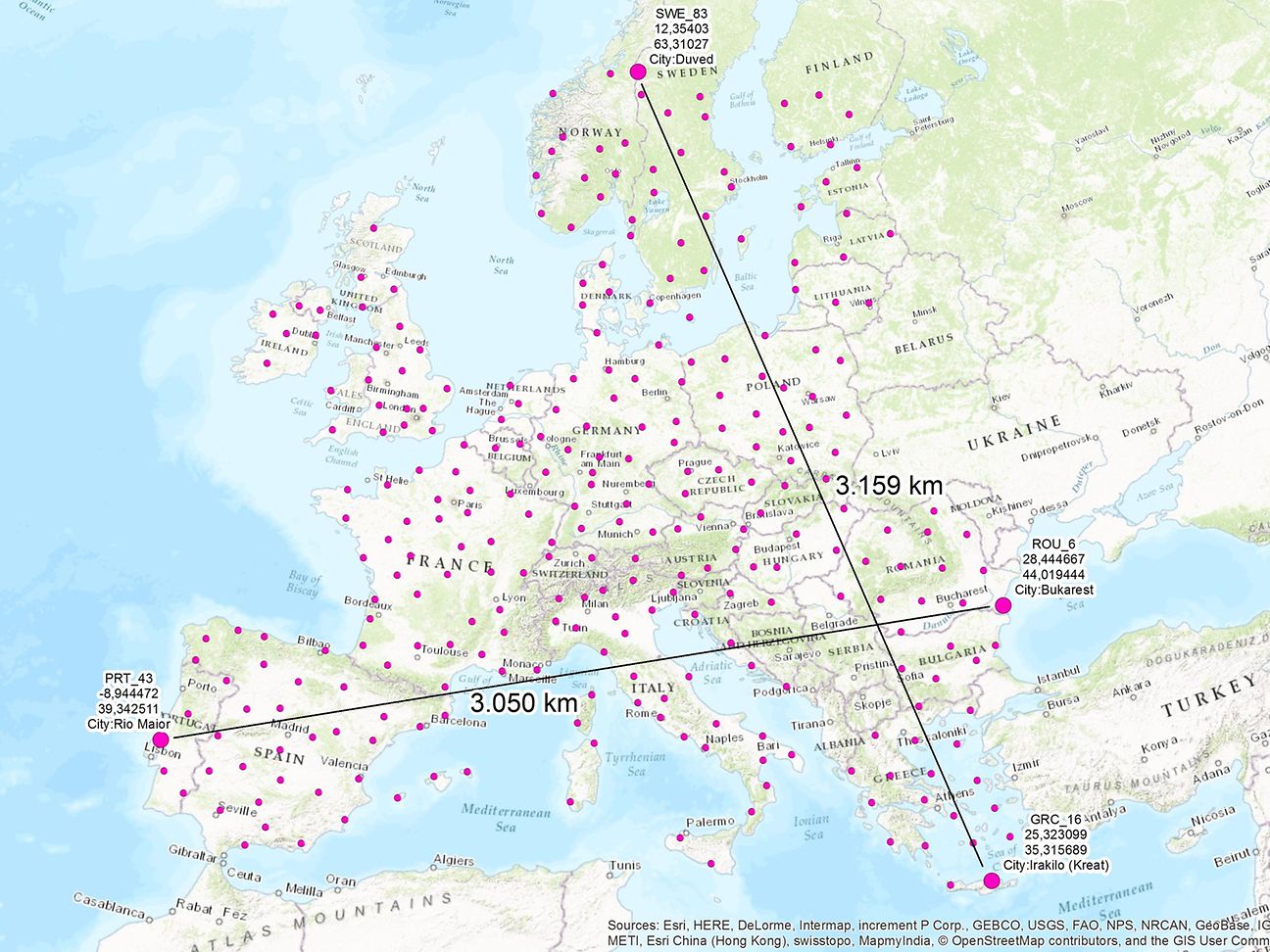

How does highspeed internet get into planes in the skies above Europe? With the help of 300 antenna sites and a satellite. The European Aviation Network (EAN) combines satellite communication with a complementary ground network and delivers real highspeed internet in the sky for the first time. Spectacular locations, technological challenges, funny stories – we collect the most exciting stories from the rollout of the 300 antenna sites.
The People Behind EAN
21-3-2018 After all our antenna stories and our show case at Mobile World Congress in Barcelona I want to introduce to you one last story: “The people behind the antennas” :-). Building the LTE component of the European Aviation Network (EAN) could not have been successful without the cooperation and support of the project team at the Deutsche Funkturm GmbH (DFMG), the radio towers company of Deutsche Telekom.
The DFMG executed the installation of the approximately 300 LTE stations across all 28 member states of the European Union, as well as Switzerland and Norway. To accomplish this, the team had to overcome a lot of obstacles and challenges, as you have seen in this blog. They had to find “free horizon spaces” which are areas free of the obstruction of buildings, mountains, etc. Additionally, the team needed to ensure that the installation of each site was delivered on-time, within budget, and fulfilled the numerous multinational contracts. But most important for the success of the project was cross-border collaboration and communication. Ensuring that personal contacts were established and maintained throughout the processes was something that the DFMG proved excellence in.
With a project of this scale that spans over 30 countries it is a truly European project: EAN was made by Europeans for Europeans.
Fast Internet on Flights
21-12-2017 While LTE can be supported at up to 500 km/h on land, one important question comes up: How does this work at speeds of up to 1200 km/h in the air? What is the difference between a LTE component of our European Aviation Network and „normal” LTE? To answer all these questions I took a closer look at an EAN-LTE antenna. Additionally I visited the laboratory of our technology partner NOKIA in Stuttgart to meet an expert, who revealed interesting insights!
So, for those of you who never understood things like “Doppler effect” in Physics classes at school and cannot really imagine what it has to do with EAN: Check out the video and you will understand – finally! :-)
.
Antenna with a view
24-11-2017 Säntis in Switzerland is the highest antenna site of all the roundabout 300 sites that are part of the complementary ground network component of the European Aviation Network. With an overall mast height of 123m, the top of the antenna mast reaches 2610m above sea level. The view and, for our service more importantly, the connectivity from here is phenomenal! In collaboration with swisscom Broadcast, all the necessary antenna components were brought to the top via cable car and then were fit at this breathtaking altitude in various locations on the building and mast itself. The new antenna will ensure effective EAN coverage within a radius of up to 75 kilometers. By that the sky above Europe in this area is as well ready for real highspeed.
Ready for the island
10-11-2017 A significant portion of EAN’s LTE antenna sites across Europe are situated on islands. More than half of the antenna sites in Greece are located on its Aegean islands which can only be reached by boat. Truck, SUVs, big ships, small boats – the antennas take a long journey to eventually deliver highspeed-internet in the planes above Europe. This shows once more: the rollout of Telekom’s complementary EAN ground network is far from ordinary and requires a lot of helping hands as well as true teamwork. For example the help of our subsidiary OTE and our partner Nokia, who were so determined to overcome any and all challenges thrown at them. All 21 Greek antenna sites are now complete – and that 2 weeks ahead of schedule!
Baby break for EAN
06-10-2017 The rollout of Deutsche Telekom’s complementary EAN ground network in Spain is advancing quickly with most of the 32 antenna sites already set up. Unexpectedly one antenna site in Casas de Don Petro, in the Spanish region of Extremadura had to do a baby break. A stork couple had chosen the lattice tower construction to not only have a wonderful view towards the Portuguese border, but to build their nest and incubate their eggs. A special surprise for the junior storks and also the antenna builders. Until the young storks hatched out the workers paused their work. Family first!
From helicopter to airplane …
09-15-2017: For the build-up of the European Aviation Network antenna, one thing is especially important: an unobstructed view so that the radio signal can’t be disturbed on its way to planes flying in 12.000m altitude over Europe. That’s why free-standing high buildings or towers are ideal antenna sites – or, as shown in the video, mountain top in the Alpes.
Whoever has been skiing in the Alpes knows how difficult the climb to towards the summit can be. How does the antenna equipment then find its way to the top? The more extreme the location, the more difficult and challenging adventurous it is getting the material there. One of the most difficult situations in this respect unfolded at Monte Generoso in Switzerland.
The only access to the top of the mountain is via a narrow unpaved ridge which is definitely far too dangerous, too complicated and time-consuming for the transport. The easiest and most efficient solution: the equipment for the installation of the antenna is delivered by a helicopter to the LTE antenna site. Despite sudden weather changes and a delayed start of the helicopter, from now on also Monte Generoso is radioing for EAN.
Extreme conditions
08-25-2017: There are two regions in Europe which the EAN team had to carefully plan ahead for due to the relatively short window of opportunity each year during which sites can be set up there: The Alps and the northernmost parts of Europe. In Norway one of the antenna sites is located close to the city of Sogndal, more than 1400 meter altitude, where snowfall may stretch last into May and June. Bringing equipment to the site often requires snow crawlers. While the weather is comparably cold in Finland and North Sweden during winter, Norway has a mountainous landscape – and that translates into wind. Ice cold wind! The team has therefore carefully planned and executed all work on these sites during the summer period – but snow was all-inclusive however J. By the way, this photograph reveals an interesting fact: Even extreme temperatures of -40 °C to +55 °C are generally not a problem for the outdoor technology.
300 LTE antennas all across Europe
08-16-2017: A boring old map to kick things off – but it’s an impressive illustration of how the 300 LTE antennas of the European Aviation Network (EAN) are distributed all across Europe. There are more than 3,000 km between the most easterly antenna in Bucharest, Romania, and the most westerly in Rio Maior, Portugal; and between the most northerly antenna in Duved, Sweden, and the most southerly in Irakilo, Greece.
Sweden? Portugal? But Deutsche Telekom doesn’t have mobile networks in those countries! In order to realize this entirely new telecommunications network made specifically for airplanes, Deutsche Telekom and Inmarsat have worked with many other partners all over Europe. But why do we need yet another network on the ground when air passengers can already get online via satellite?
European airspace is one of the busiest in the world, which means vast numbers of passengers in a very limited space. As more and more passengers want to stream videos or send e-mails at the same time via satellite connections, less and less bandwidth is available to each user. The capacity per satellite is limited and putting new satellites into space is a difficult and costly business. Demand for data volumes is rising in the air, as well as on the ground. This means we also need to build out a network to create additional capacity for European airspace. And this is where the ground component of the new European Aviation Network comes in. The familiar LTE technology is being tweaked for the special needs of air traffic and specially developed antennas are being put up. So, EAN combines the best of both worlds: together, the existing satellite technology and the specially adapted LTE network offer never before available bandwidths above the clouds.
Another benefit of the new, complementary ground network is that when demand for data traffic rises in a certain airspace, adjustments can be made with relative ease in the EAN-LTE network. Either antennas can be reoriented so as to optimize coverage of the airspace, or additional antennas can be set up.
As is the way with these things, there are sometimes pitfalls and challenges in setting up the network. Over the next few weeks, we will report on precisely this aspect in this article – so keep an eye out.









